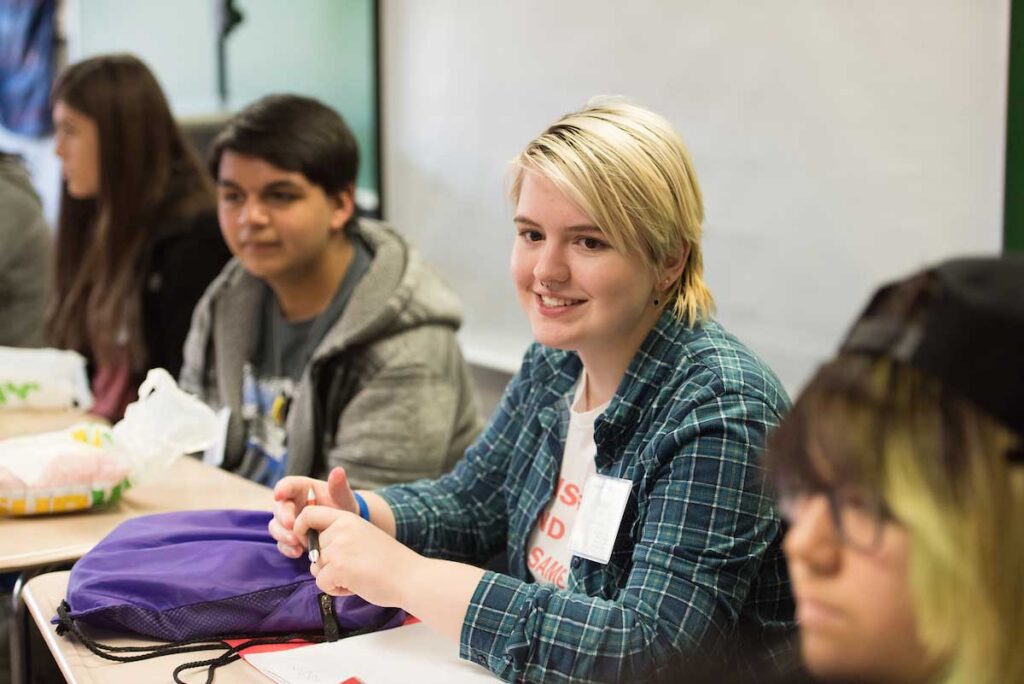We support young people leading the way in abolishing gender stereotypes, advancing gender equity, and creating a world free of misogyny.
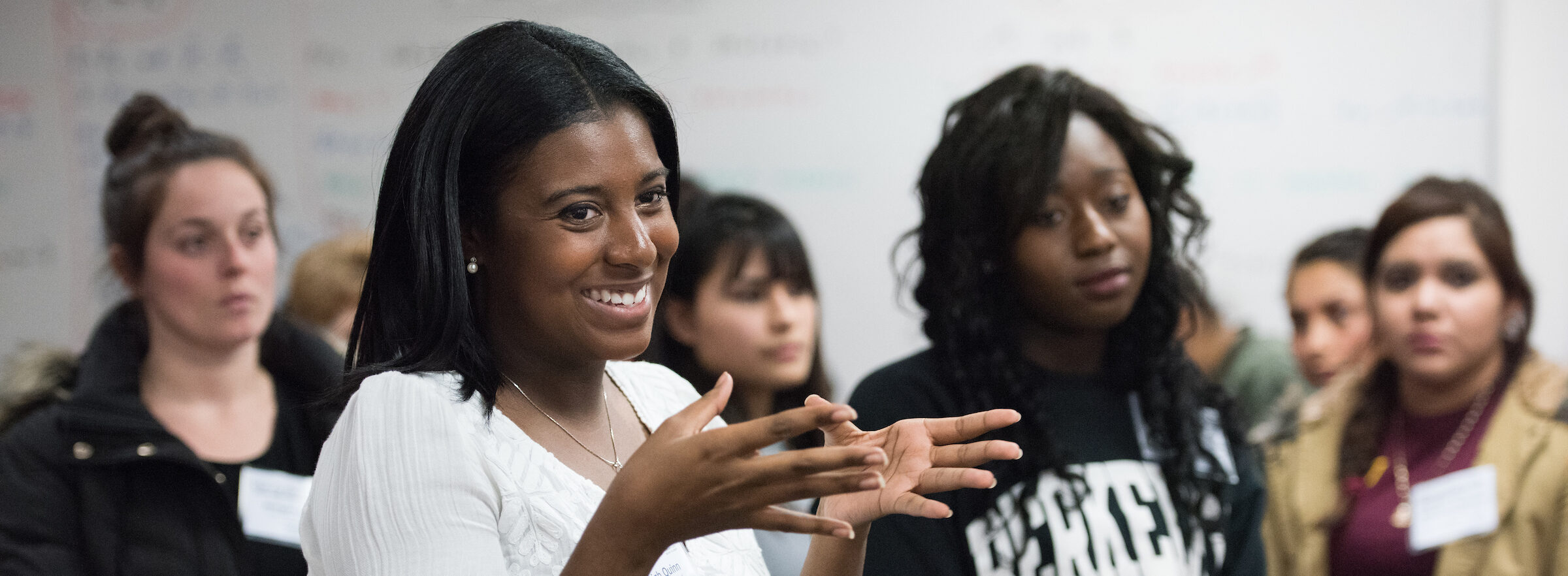
Jump to a section:
Important Gender Justice and Equity Terms
Below are some key terms relating to the fight for gender justice and equity:
- Patriarchy: a political-social system that insists that males are inherently dominating, superior to everything and everyone deemed weak, especially females, and endowed with the right to dominate and rule over the weak and to maintain that dominance through various forms of psychological terrorism and violence. (bell hooks)
- Sexism: beliefs that rationalize the patriarchy by naturalizing sex differences. (Kate Manne) For example, sexism claims that in the “natural” order of social organization, women act as emotional and social caregivers.
- Misogyny: social systems or environments where women face hostility and hatred because they’re women in a man’s world. (Kate Manne) Misogyny enforces sexism and sexist ideas through social structures, policies and behaviors.
- Feminism: a movement to end sexism, sexist exploitation, and oppression. (bell hooks)
- Gender justice: ending the inequalities between women and men that are produced and reproduced in the family, the community, the market and the state. (UN Women)
- Gender equity: a set of actions, attitudes, and assumptions that provide opportunities and create expectations about individuals, regardless of gender.
Also, an important note on inclusion: trans women are women, and trans issues need to be considered as part of gender justice. More information and resources on trans topics can be found on the page for LGBTQ+ Youth.
How Gender Injustice Shows Up in Today’s World
- Starting with physical security, women and girls are much more likely to face harassment, domestic violence, stalking, and rape than males. The National Domestic Violence Hotline reports that females ages 18-34 generally experienced the highest rates of intimate partner violence (IPV).
- Women are also more likely to live in poverty. Across the U.S., 15.5% of women live in poverty compared with 11.9% of men, according to a report from the Institute for Women’s Policy Research.
- Everyone should be paid the same amount to do the same job regardless of gender, right? This is not (and has not been) the case in the U.S., which has a persistent “gender pay gap” where women, especially women of color, earn less than their male counterparts for doing the same work. In 2020, white women make only $0.81 for every dollar a white man makes, and Black, Latinx and Native women make $0.75 for every dollar a white man makes. You can explore the gender pay gap in detail here with PayScale.
- Women are hugely underrepresented in government at all levels. Although women are 51% of the U.S. population, only 25% of the Senate and 23% of the House of Representatives are women. This means when laws are debated and passed, women’s voices are not being reflected and heard appropriately.
- Female athletes are consistently paid less and have their matches or games covered less by sports media (just ask the U.S. Women’s Soccer team, which is suing the U.S. Soccer Federation for equal pay).
Gender Justice Leaders Who Inspire Us
Here’s a list of folks who are leading the conversation on gender justice today. They inspire and inform our work. Follow them on social media, or seek out opportunities to hear them speak to dig deeper on these issues.
YCD Workshops on Gender Justice and Equity
YCD has a curated library of over 60 workshop guides on every aspect of inclusion and justice work for middle and high school youth to explore in their own youth-led club or group — with new workshops being published every month. These guides can also be used by educators as part of their in-school curriculum, where interested.
Below is a free sample workshop created by YCD on the topic of gender justice and equity, available for anyone to use and download.
Exploring Gender Equity
Gender equality has been an important issue throughout our nation’s history, but we see little discussion on gender equity. This activity asks participants to compare gender equality and gender equity and consider how each shows up in their personal lives.
Other topics available as downloadable workshop guides or offered at YCD conferences/events include:
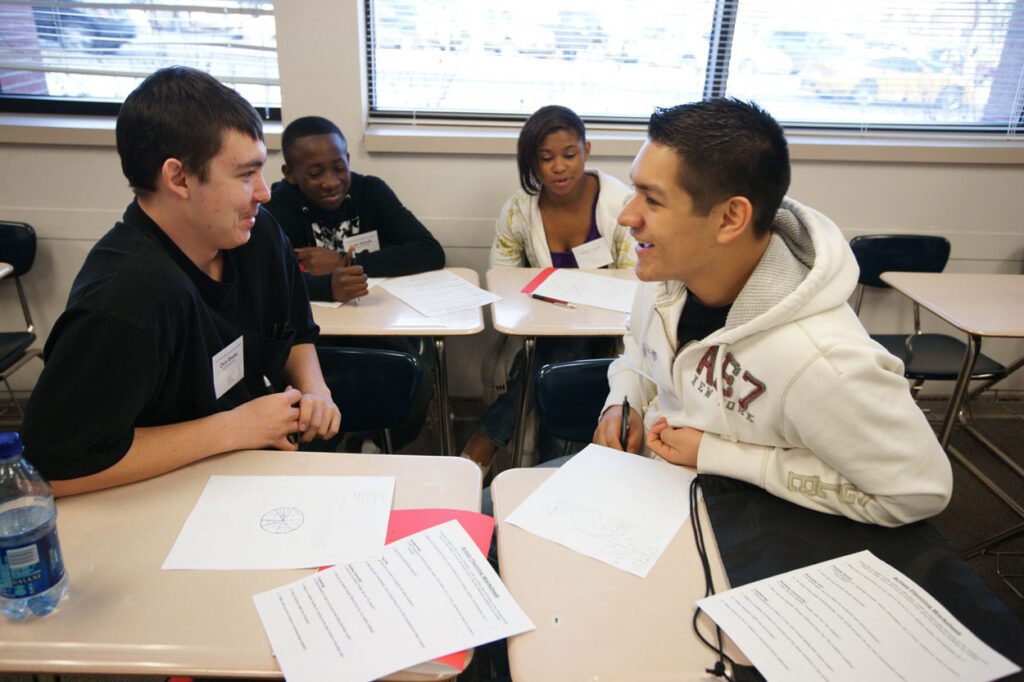
Healthy Masculinity = Healthy Men
It’s no secret that the quality of life for many men and boys has declined in the past several decades—from addictions to absent fathers, and failure to launch, to suicide across the lifespan. We will discuss the roadblocks to healthy manhood, based our society’s “man rules”, and will show how those rules impede physical, social, emotional and psychological health. Finally, as a group we will create solutions for improving health for men/boys.
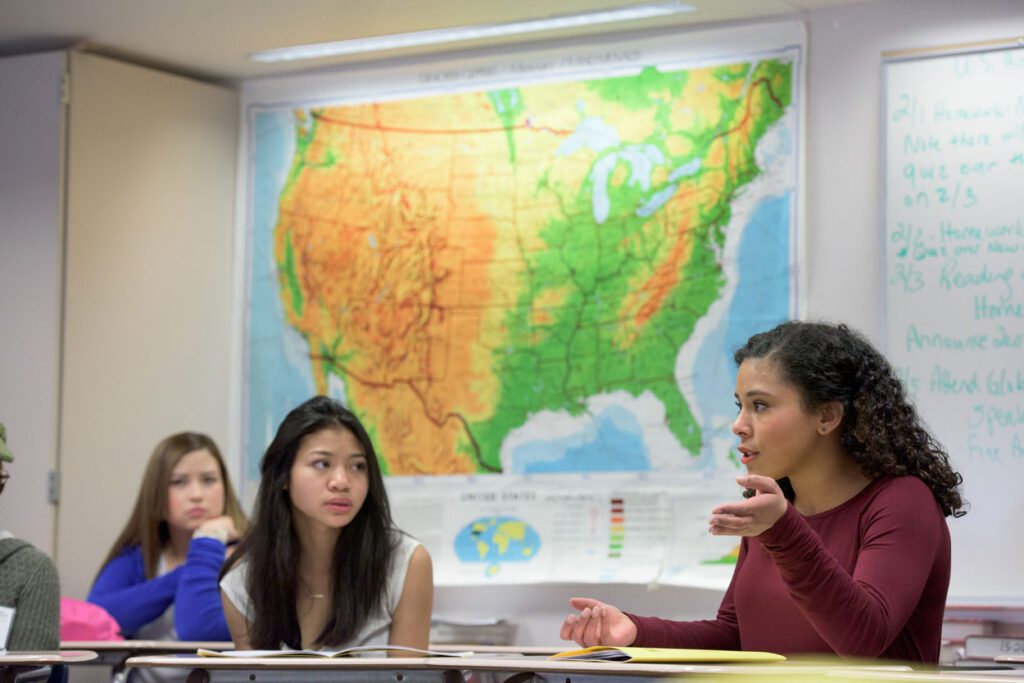
Hurting vs. Flirting: Do You Know the Difference?
Sexual harassment is one of the most common forms of bullying in schools. Being aware of what sexual harassment is and what it is not helps us all to have a better understanding of how to handle this sometimes subtle behavior and how to help others when they are in an uncomfortable situation.
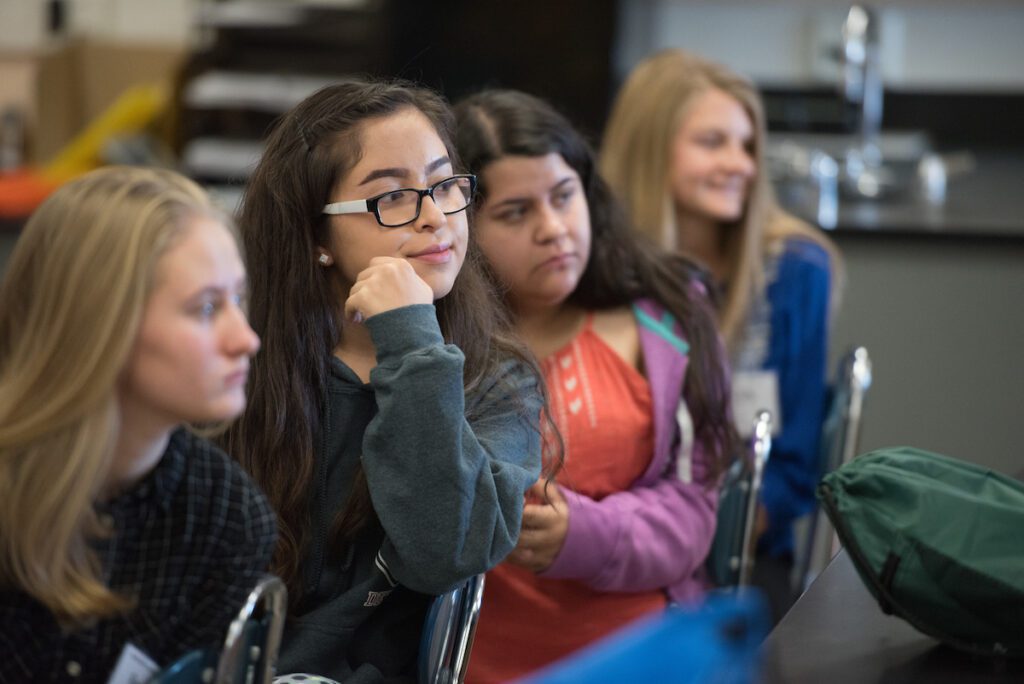
The Instagram Effect
Together, we will explore the ways that Instagram affects high school aged girls (14-19 years old) and their developing body image. During this workshop, two current students will provide insight on the effect Instagram has on them. Additionally, The Instagram Effect will provide tools and techniques to utilize social media in positive ways to resist harmful messages, foster healthy self-esteem, and encourage body positivity in young girls.
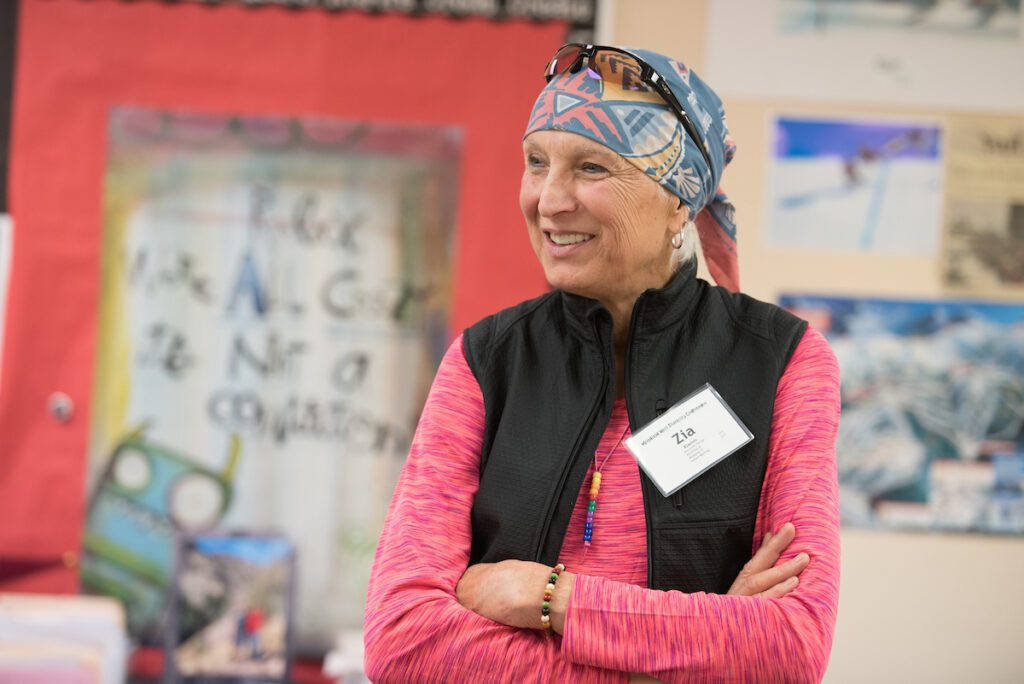
Unpacking Gender
This workshop will challenge your perceptions and understandings of gender through a cisgendered lens. Ideally, you will walk away with new language, how to better implement strategies for inclusion within your spaces and additionally understand how privilege, power and oppression takes place among trans folx.
To experience these workshops, YCD events, and much more, start or join a YCD chapter!
Videos to Explore Gender Justice and Equity
How Sexism Shows Up in Schools
This webinar explores how sexism shows up in schools and the education system for teens, including an intersectional look at how sexism affects young women of color in particular.
Exploring Feminism
What does it mean to be a feminist in 2020? What challenges or issues is feminism still working to address and solve? Hear from two leaders of the Womxn’s March Denver about their perspectives on feminism in 2020.
The Epidemic of Missing and Murdered Indigenous Women
The U.S. Department of Justice found that American Indian women face murder rates that are more than 10 times the national average. Hear from the Coalition to Stop Violence Against Native Women (CSVANW) to learn about the epidemic of missing and murdered Indigenous women (MMIW) and what is being done to address it. This is an important conversation for everyone to hear and join in.
Understanding and Combating Rape Culture
As rape culture normalizes sexual violence through stereotypical ideas about gender, sex, and power, it is vital that we educate ourselves on these topics, so we can better understand the effects they have on each person in our community. This session looks at how rape culture perpetuates victim blaming, uses stereotypes seen in everyday life to create a false narrative about sexual violence, and will help the audience better understand the truths about sexual violence in our society.
What does it mean to have a non-binary gender identity?
Diversity around gender identity continues to grow, and the term “non-binary” has become more and more well-known as an alternative to strictly male or female gender identities. In this video a teen who identifies as non-binary is interviewed about their experiences coming to realize they are non-binary, what it means to them, and what some common misunderstandings or misconceptions are around the identity.
Stay up to date for future student-generated videos on this topic and more by subscribing to YCD’s YouTube channel.
Gender Justice Books for Students
Here is a list of recommended books for students and teens that explore and address gender justice issues. You can find free e-books or your local library using OverDrive.com.
Gender Justice Books for Educators and Adults
And this list is for teachers, educators and adults looking for guidance on gender justice within the classroom or school system.
Movies Addressing Gender Justice
Below are movies that address gender justice topics in meaningful and compelling ways.
Podcasts on Gender Justice
Here is a list of recommended podcasts you can download and follow to explore gender justice work in more detail.
Ideas for Local Action to Address Gender Justice
Here are just a few ideas of ways students can take action locally to advance gender justice and equity in your school or community:
- Invite a local non-profit organization that supports sexual assault victims to conduct a workshop on sexual harassment. Promote attendance so that all students feel invited and compelled to attend. Come up with a group plan on how to combat sexual harassment in your school and community.
- Conduct research on the attendance, funding and support for female versus male sports and athletics in your school. Does your school celebrate and support female athletes equitably? Are there policy, funding or other changes your administration should make to bring equity between male and female sports teams?
- Does your school support healthy masculinity? Conduct a roundtable or panel discussion among male students from different backgrounds on the pressures they feel connected to masculinity, and have an open dialogue around how to create a healthy masculinity culture in your school and community.
- Learn more about the epidemic of missing and murdered indigenous women (MMIW). Seek out a local indigenous speaker or organization to share information, or if none are available in your local community, check out the Coalition to Stop Violence Against Native Women and their resources. After learning, share and spread the knowledge, and support Native people’s work to end the epidemic.
- Are women and girls represented equitably in your school’s Student Council, popular clubs and extracurricular activities, and other leadership roles? If not, conduct a project to look at the history behind female leadership in the school, and come up with a plan to promote and encourage female student leadership.
Do you have a suggestion of an addition or resource for this page? Share your idea with us.

